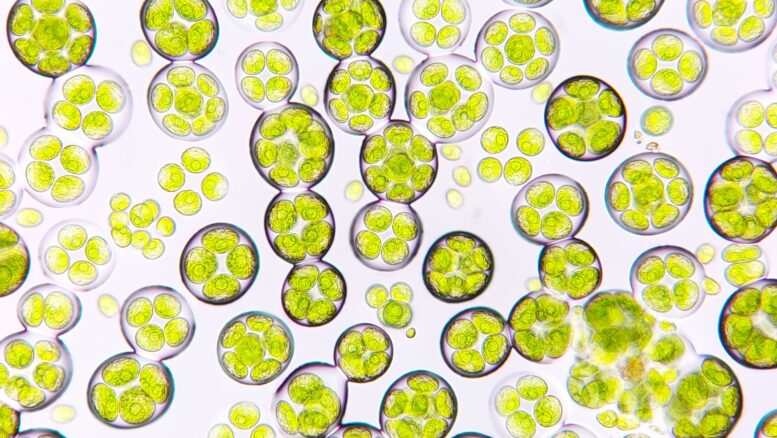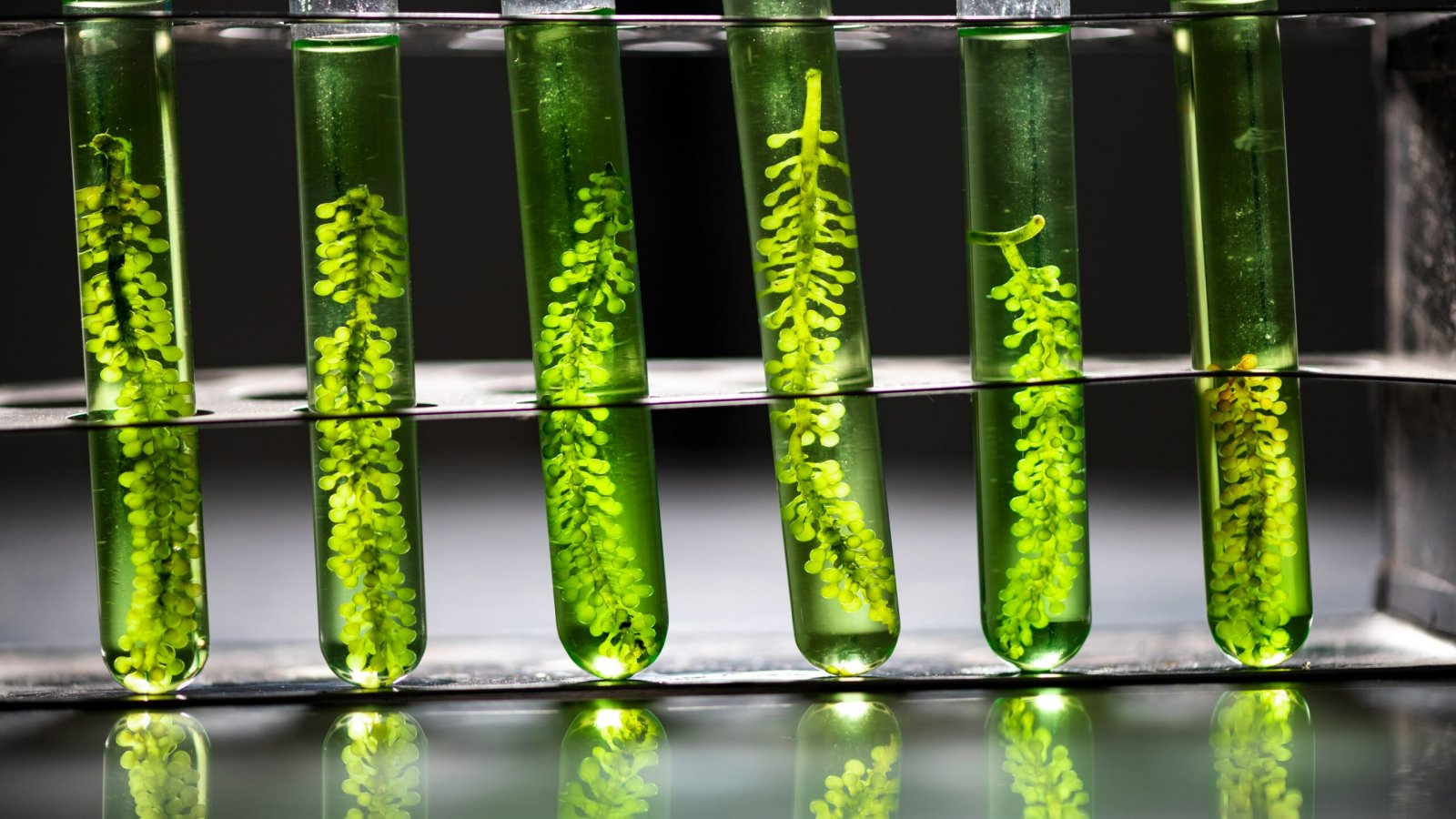Macroalgae vs. microalgae – what sets them apart
Macroalgae:
- Traditionally used in Japan, Korea, China as foods
- Typical representatives: wakame, dulse, ulva
- Benefits: umami flavor, natural coloring, minerals
- Applications: soups, seasonings, snacks, delicatessen

Microalgae:
- Can be cultivated in fermentation or photobioreactors → industrial scalability
- Typical representatives: Chlorella, Spirulina, Nannochloropsis, Schizochytrium
- Benefits: proteins, vitamin B12, folic acid, omega-3, pigments (phycocyanin, chlorophyll)
- Applications: plant-based alternatives, sports nutrition, functional beverages
In short: Macroalgae deliver character. Microalgae deliver power.

Microalgae as a nutrient booster
Many plant-based foods have a nutrient gap – especially vitamin B12, folic acid, and certain amino acids are lacking. Microalgae close this gap:
- While Spirulina is mainly known in Europe from smoothies and supplements, Chlorella is considered the more technologically advanced alternative. In particular, Golden and White Chlorella open up entirely new opportunities for the food industry:
- Golden Chlorella provides highly bioavailable vitamin B12 and folic acid – essential for vegan nutrition.
- White Chlorella adds proteins, fibers, and a whitening effect that gives plant-based meat and egg alternatives a light, appetizing appearance.
This makes Chlorella a key ingredient for the food industry when it comes to nutrition, texture, and clean label.
Sensorics: masking, enhancing, differentiating
Microalgae impress not only with their nutrients but also with their sensorial functionality:
- Masking off-flavors – typical beany or earthy notes from soy or pea protein can be significantly reduced with Golden or White Chlorella.
- Natural umami – microalgae add subtle, natural seasoning, helping reduce the need for flavorings or flavor enhancers.
- Visual effects – White Chlorella brightens, while phycocyanin from Spirulina provides intense blue – popular in ice cream, beverages, and confectionery.
The result: foods that are sensorially balanced, visually appealing, and declaration-friendly.
Technology: texture and process reliability
For food technology, microalgae (especially Golden and White Chlorella) are not only nutrient carriers but also functional tools:
- High moisture meat analogues (HMMA) or textured vegetable proteins (TVP): improve fiber structure, juiciness, and bite.
- Vegan cheese and egg alternatives: contribute to creaminess and consistency.
- Beverages: stability and viscosity control.
Thus, microalgae are a multitool in food technology: nutrient, texture, flavor – all in one raw material.
Sustainability: argument and reality
Another decisive advantage: microalgae are highly sustainable.
- Land use: compared to soy or other protein sources, algae require only a fraction of the cultivation area.
- Water: algae cultivation uses far less water than conventional agriculture.
- CO₂ binding: algae absorb CO₂ during growth.
- Independence: production in closed systems (fermenters, photobioreactors) – independent of climate, soil, or geopolitical risks.
Internationally, algae are already seen as the “next gen protein” – comparable to the role soy played in the 1970s.
Conclusion: microalgae are the future
Macroalgae bring flavor, appearance, and tradition – microalgae bring nutrients, technology, and scalability.
For the food industry, they are no longer a niche topic but a strategic raw material with functional added value, clean-label potential, and sustainability.
Those who embrace microalgae today secure technological advantage – and a strong position in the nutrition of tomorrow.
Would you like to learn more about how microalgae can improve your formulations?
Talk to our team – we support you with selection, customization, and integration.



